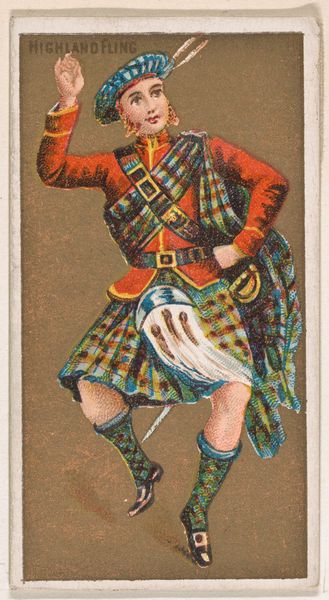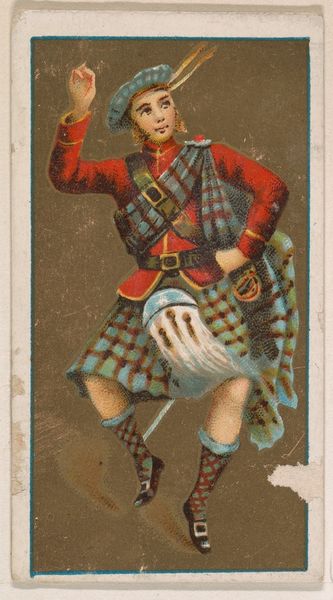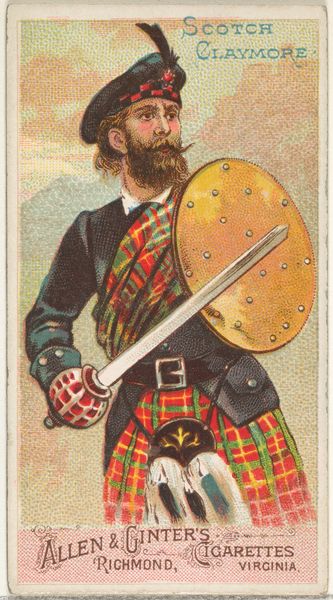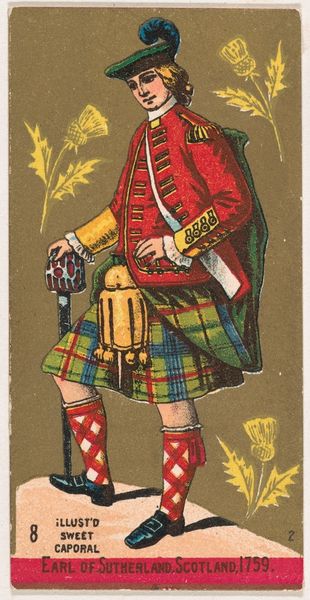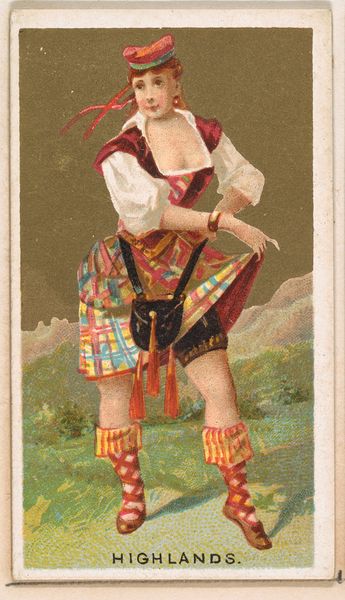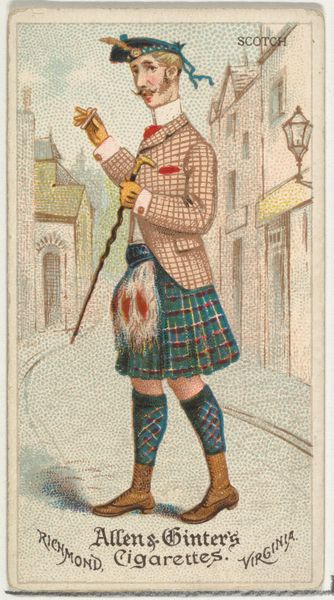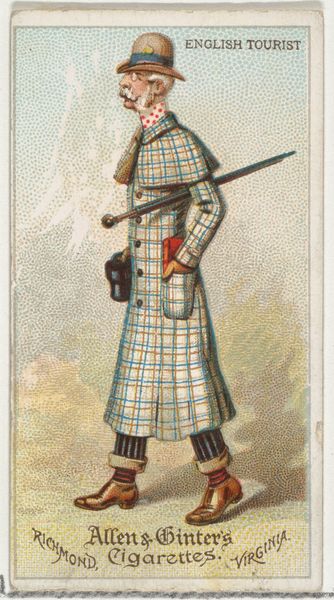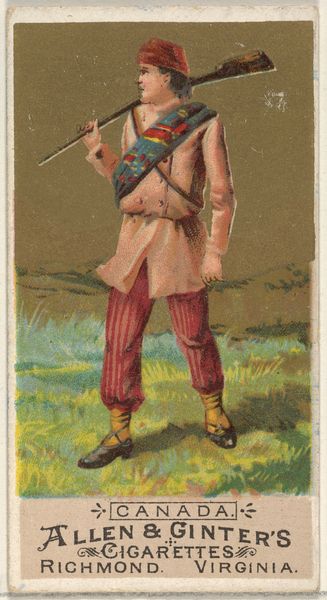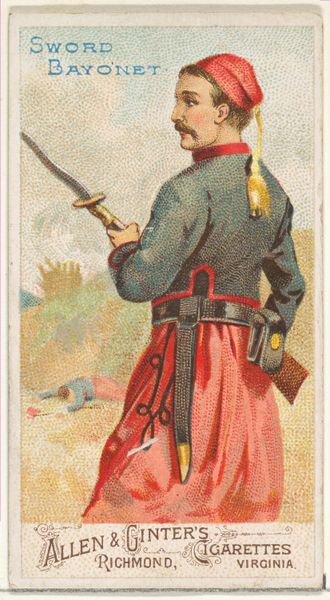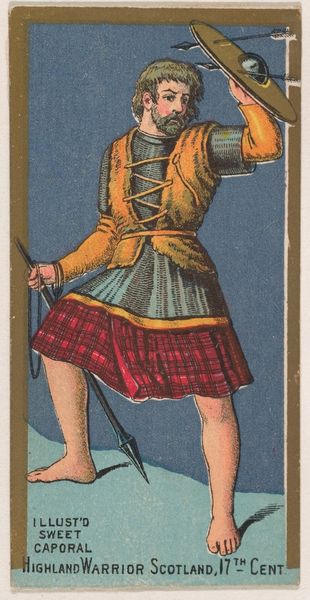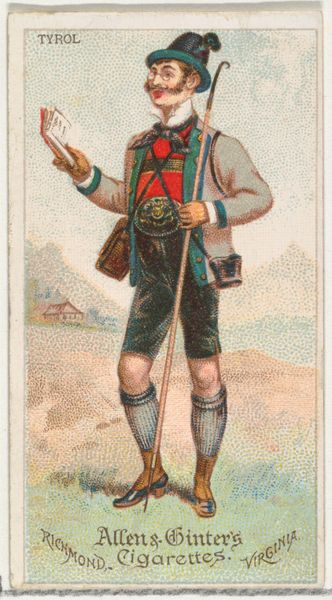
Scotland, from the Natives in Costume series (N16) for Allen & Ginter Cigarettes Brands 1886
0:00
0:00
lithograph, print
#
portrait
#
lithograph
# print
#
caricature
#
coloured pencil
Dimensions: Sheet: 2 3/4 x 1 1/2 in. (7 x 3.8 cm)
Copyright: Public Domain
Curator: What catches my eye immediately about this image is how utterly *posed* it feels. It’s stylized and staged in a way that speaks volumes. Editor: Exactly. This is "Scotland, from the Natives in Costume series" produced in 1886 by Allen & Ginter Cigarettes. We know it through a lithograph, likely after a drawing with colored pencil. The company was based in Richmond, Virginia. I'm particularly drawn to the materiality. These trade cards were designed to be collected. Curator: Trade cards, yes, miniature windows into the world. The figure presented clearly aims to signify Scotland – the bagpipes, the kilt. Yet it strikes me as more a constructed image of Scottishness, packaged for consumption, than an authentic representation. Editor: I agree completely. Mass-produced lithographs disseminated through consumer goods. The entire process reduces cultural markers, right? What are we buying into here? What kind of labor created this and what purpose did it serve beyond selling cigarettes? Curator: A romantic ideal, perhaps, distilled and simplified. The kilt, the bagpipes become signifiers of an identity carefully curated for an audience. Consider also the impact on collective memory: the way stereotypes are reinforced, even subtly. How has this image entered our vocabulary of cultural shorthand? Editor: Let’s think more about this reproduction through printing. The relative ease with which colored images can be turned out creates a powerful flattening. It reinforces existing power dynamics, which controlled image creation and distribution in a new industrial context. It's worth acknowledging the impact of this scale and efficiency. Curator: It’s easy to dismiss it as a simple caricature. And yet, embedded within that seemingly simplistic representation, lie echoes of history and cultural perceptions. It becomes an interesting exercise in visual archaeology to consider these elements. Editor: Definitely food for thought as we explore the object further. It provokes key inquiries for me to keep interrogating as a Materialist! Curator: And, hopefully, also invites a closer look at the stories we tell ourselves, reflected and refracted through images.
Comments
No comments
Be the first to comment and join the conversation on the ultimate creative platform.

